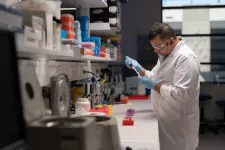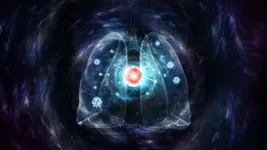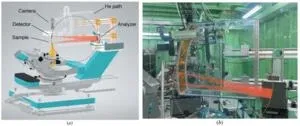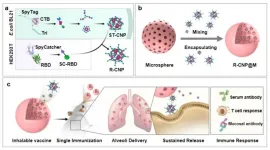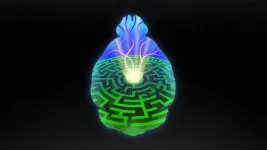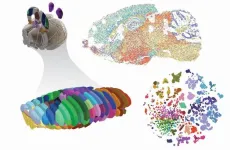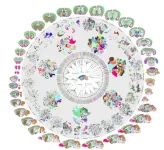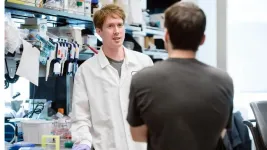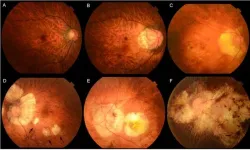(Press-News.org) The most comprehensive analysis of Indigenous Australians’ genomes collected to date has revealed an “abundance” of DNA variations – some of which have never been reported anywhere else in the world – paving the way for new, personalised treatments that address health inequities for Aboriginal and Torres Strait Islander peoples.
A team of Australian researchers, led by scientists from The Australian National University (ANU), found DNA differences between Indigenous Australians living in the Tiwi Islands and Indigenous peoples living in the Australian desert is equivalent to comparing the genetic information of someone from Bangladesh to the United Kingdom.
The researchers detected hundreds of thousands of ‘structural gene variants’ that affect large segments of DNA. These variants occur naturally in different individuals of a population, make up most of the genetic differences between individuals, and may be linked to genetic disease in some families.
“The DNA sequencing shows for the first time this level of DNA variation observed anywhere else in the world outside of Africa, reflecting Aboriginal and Torres Strait Islander peoples’ deep cultural and linguistic diversity and long-standing connection to the Australian continent,” Dr Hardip Patel, from ANU, said.
“Some of the DNA variations we discovered appear to be exclusively found in Indigenous Australians, while others appear to be found only in one out of the four Indigenous communities that we consulted and worked with.
“Previously we’ve had to try to utilise the DNA of non-Indigenous populations to help diagnose and treat disease among Indigenous Australians, which has proven difficult and is often less reliable. But now we have a new, more accurate and personalised genomic dataset to build off.”
Led by the National Centre for Indigenous Genomics (NCIG) at ANU, research teams examined the DNA of 160 Indigenous Australians from four Aboriginal communities in the Central Desert, Far North Queensland and two islands off the coast of the Northern Territory.
It’s hoped the research will improve health outcomes for Indigenous Australians by enabling tailored treatments for a range of conditions including diabetes, coronary disease and cancer – all of which disproportionately impact Indigenous peoples compared to the rest of the Australian population.
“Aboriginal people have long said you can’t treat us the same because we are so different. Having scientific proof to show this is true is remarkable,” ANU Associate Professor Azure Hermes, a proud Gimuy Walubara Yidinji woman and deputy director of NCIG, said.
“Clinicians must realise treatment options for Indigenous Australians can’t be viewed through a one-model-fits-all lens. We are not a single genetic group and can’t be lumped into one category.”
Dr Ira Deveson, from the Garvan Institute of Medical Research, said: “we identified more than 160,000 structural gene variants, which is more than any previous population-level, long-read study to date.”
“The research team discovered at least 300 structural variants in each individual that appear to be unique to Indigenous Australians.”
A genome is equivalent to an instruction manual for the body. It is a blueprint that contains all the genetic information we need to grow, develop, function and respond to the environments in which we live.
Genomics medicine harnesses an individuals’ genetic information to develop personalised prevention and treatment strategies for a range of health conditions, as well as rare genetic disease.
“The code embedded in our genome is unique to each individual – it’s what makes us different to other human beings. Variations within our genetic code can not only explain the way we look but can sometimes impact our risk of developing certain diseases,” Dr Patel said.
“We still don’t understand why Aboriginal people are more prone to health conditions such as kidney disease, diabetes, coronary disease, cancer and other conditions. But genomics might be an important piece of the puzzle that helps unlock some of these answers.”
Associate Professor Hermes said the project is also about giving Indigenous communities oversight of how their genetic information is used by science.
“Our goal is to work with and empower Indigenous Australians to take ownership of their genetic information and show them the power of genomics and the health benefits it can deliver,” Associate Professor Hermes said.
“It’s taken us almost eight years to get to this point and has only been made possible because of guidance by Indigenous communities, careful consultation, building relationships with communities and understanding their priorities and protocols.”
NCIG houses a biobank of 7,000 blood samples from 35 Aboriginal communities across Australia. The centre is working in collaboration with Indigenous communities to figure out the best ways to care for and return these samples.
"At ANU we have established a plan for communities to decide the future use and management of these important blood samples and the data that can be generated from them,” Associate Professor Hermes said.
“This is an important step toward long-lasting reconciliation with Indigenous Australians.”
The research is published in two separate papers in Nature. This work was led by ANU in collaboration with The University of Melbourne and the Garvan Institute of Medical Research, as well as other institutions across the country.
END
DNA discovery opens door to personalised medicine for Indigenous Australians
2023-12-13
ELSE PRESS RELEASES FROM THIS DATE:
Researchers develop a novel dry-powder inhaled vaccine platform
2023-12-13
Researchers from the Institute of Process Engineering (IPE) of the Chinese Academy of Sciences have proposed a new “nano-micro composite” delivery concept for vaccines. Based on this idea, they have developed a single-dose, dry-powder, inhalable vaccine platform using nano-micro composite multilevel structures, which has been successfully prepared in the laboratory, and the vaccine has been shown to be effective in blocking respiratory viral infection and transmission in animal models. This platform holds great promise for combating future emerging and epidemic infectious diseases.
This ...
Growing use of hemp-derived alternative cannabis products containing CBD, Delta-8-THC, CBG, CBN
2023-12-13
Cannabis use for medicinal or recreational purposes is now permitted is most states in the U.S. Many of the products sold in dispensaries contain delta-9-tetrahydrocannabinol (better known as “THC”), and are thus classified as Schedule I drugs, making them illegal under federal law.
However, there is a parallel market for products derived from hemp—defined as cannabis containing less that 0.3 percent THC—spurred in part by the passage of the 2018 Farm Bill, which removed hemp-derived cannabinoids from the federal Controlled Substances Act.
A new U-M study published in JAMA Network Open examines past-year use of some of these hemp-derived ...
Penn Medicine research shows how stress activates neurons that disrupt sleep
2023-12-13
PHILADELPHIA— New research reveals that neurons in the preoptic hypothalamus—the region of the brain that regulates sleep and body temperature—are rhythmically activated during non-rapid eye movement sleep (NREM). Stress activates these brain cells out of turn, causing “microarousals,” that interrupt sleep cycles and decrease the duration of sleep episodes, according to research from Perelman School of Medicine at the University of Pennsylvania, published today in Current Biology.
While our bodies are at rest when we are asleep, ...
New study sheds light on how the brain learns to seek reward
2023-12-13
By Jake Siegel
Imagine you’re teaching a dog to play fetch. You throw a ball, and your dog sprints after it, picks it up, and runs back. You then reward your panting pup with a treat. But now comes the real trick for your dog: figuring out which part of that sequence earned the treat. Scientists call this the 'credit assignment problem' in the brain. It's a fundamental question about understanding which actions are responsible for the positive outcomes we experience.
Dopamine, a key chemical ...
Salk teams assemble first full epigenomic cell atlas of the mouse brain
2023-12-13
LA JOLLA (December 14, 2023)—Salk Institute researchers, as part of a worldwide initiative to revolutionize scientists’ understanding of the brain, analyzed more than 2 million brain cells from mice to assemble the most complete atlas ever of the mouse brain. Their work, published December 14, 2023 in a special issue of Nature, not only details the thousands of cell types present in the brain but also how those cells connect and the genes and regulatory programs that are active in each cell.
The efforts were coordinated by the National Institutes of Health’s Brain Research Through Advancing Innovative Neurotechnologies® Initiative, or the BRAIN Initiative®, ...
Scientists unveil first complete cellular map of adult mouse brain
2023-12-13
By Jake Siegel
Six years and 32 million cells later, scientists have created the first full cellular map of a mammalian brain. In a set of 10 papers in Nature today, a network of researchers unveiled an atlas cataloging the location and type of every cell in the adult mouse brain. Using advanced technologies that profile individual cells, the teams identified over 5,300 cell types – far more than known before – and pinpointed their locations within the brain’s intricate geography. ...
Using next-gen CRISPR tool, Gladstone scientists create unprecedented molecular map of human immune response
2023-12-13
SAN FRANCISCO—December 13, 2023—In a study of historic scale, scientists at Gladstone Institutes have created an intricate map of how the immune system functions, examining the detailed molecular structures governing human T cells using the next-generation CRISPR tool known as base editing.
Their findings, published in Nature, uncover detailed information that could help overcome the limitations of today’s immunotherapies and identify new drug targets for a wide range of diseases, including autoimmune diseases and cancer.
Led by Gladstone Senior Investigator Alex Marson, MD, PhD, the team dove deep into the DNA of T cells, pinpointing ...
Discovery of magnetic liquid crystal
2023-12-13
Liquid crystal is a state of matter that exhibits properties of both liquid and solid. It can flow like a liquid, while its constituent molecules are aligned as in a solid. The liquid crystal is widely used nowadays, for example, as a core element of LCD devices. The magnetic analog of this kind of material is dubbed the “spin-nematic phase”, where spin moments play the role of the molecules. However, it has not yet been directly observed despite its prediction a half-century ago. The main challenge stems ...
A rare enzyme role change with bacterial defense system assembly
2023-12-13
COLUMBUS, Ohio – Scientists have revealed a never-before-seen phenomenon in a protein: Alone, the enzyme processes DNA and RNA but, when bound to another protein as part of a defense system, interacts with a completely different type of compound to help bacteria commit suicide.
The finding came about as the researchers focused on detailing how this defense mechanism works in bacteria that are infected by phages, viruses that invade and make copies of themselves inside bacterial cells. In addition to detailing the proteins’ structures and binding sites, the experiments unearthed ...
Machine learning sees into the future to prevent sight loss in humans
2023-12-13
Researchers from Tokyo Medical and Dental University (TMDU) develop models based on machine learning that predict long-term visual acuity in patients with high myopia, one of the top three causes of irreversible blindness in many regions of the world
Tokyo, Japan – Machine learning has been found to predict well the outcomes of many health conditions. Now, researchers from Japan have found a way to predict whether people with severe shortsightedness will have good or bad vision in the future.
In a study recently published in ...
